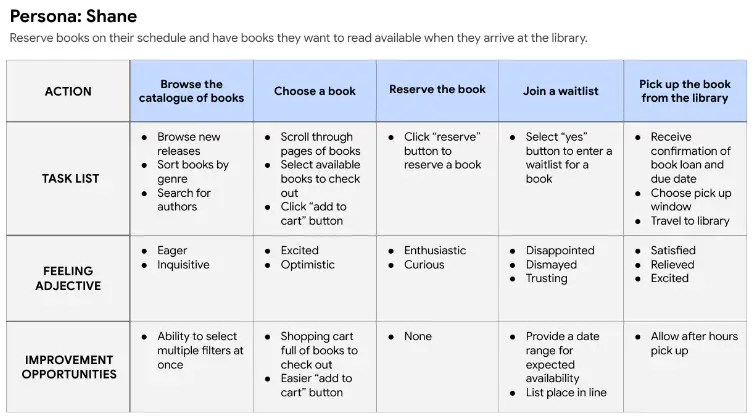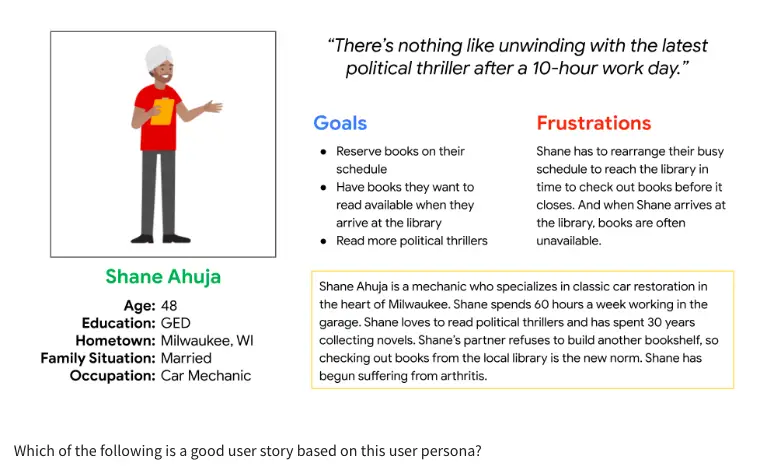14. What is the difference between bottom-up design and top-down design?
- Bottom-up design means designing for the device users access the least and embellishing designs later for devices users access the most. Top-down design means designing for the device users access the most and working down to devices users access the least.
- Bottom-up design means designing for a large screen size and embellishing designs for smaller screen sizes. Top-down design means designing for a small screen and working up toward a larger screen.
- Bottom-up design means designing for the smallest version of your site and embellishing designs for larger screen sizes. Top-down design means designing for a large screen and working down toward a smaller screen.
15. What is the primary device type designers should consider when designing for the next billion users (NBU)?
- A smart television
- A smartwatch
- A desktop
- A mobile phone
16. Fill in the blank: When designing solutions for a large global audience, designers should take the _____ approach.
- data-first
- mobile-first
- design-first
- desktop-first
17. You design a music streaming app for laptops, desktops, and mobile phones. Users can start a playlist from their laptop or desktop and listen to it on mobile phones, or vice versa, as long as the devices are attached to the same account log-in. Which of the four Cs does this feature represent?
- Context
- Complementary
- Continuity
- Consistency
18. What are some drawbacks to responsive web apps?
- Responsive web apps require an internet connection or cell signal.
- Responsive web apps require building different versions for different platforms.
- Responsive web apps are more expensive to build.
- Responsive web apps take up space on mobile devices.
19 Review the journey map for user persona Shane: Shane was able to browse the catalog of books, but was not able to find any twentieth century books in a short time. Based on this pain point, you recommend expanding the site’s filter options. Which row in the journey map should include your recommendations?

- Task List
- Action
- Improvement Opportunities
- Feeling Adjective
20. What elements make up a problem statement? Select all that apply.
- Solution
- Characteristics
- Name
- Insights
- Needs
21. A design team is working on an app for a government information tool and suggests this problem statement: Casey just moved to the area and needs to get information about setting up utilities because he doesn’t know who to contact. What element is missing in the problem statement?
- Insight
- User need
- User name
- User characteristics
22. Consider the following persona and answer the following question:

- As a professional and avid reader of political thrillers, I want to build another bookshelf, so I can collect more books.
- As a social person and busy professional, I want to adjust my work hours, so that I can check out books before the library closes.
- As a busy professional and avid book lover, I want to be able to reserve books in advance, so that I can pick them up based on my schedule.
23. What is the final step in conducting a competitive audit?
- Outline the goals
- Summarize your findings
- Research each product
- Create a list of your competitors
24. You decide to design a global communication app for a mobile device first. Which of the following factors contribute to your decision?
- Users will have reliable internet access
- Users will be in a metropolitan area
- Users will be located in emerging markets
- Users will be at home or work when they access the product
Shuffle Q/A 1
25. Fill in the blank: Designing solutions for the next billion users (NBU) should include solutions based on a _____ philosophy, so they can be accessible for all of these new potential users.
- desktop-first
- mobile-first
- data-first
- privacy-first
26. Why should designers take a mobile-first approach when designing solutions for new potential users?
- Adopting a mobile-first approach converts mobile users to desktops users.
- Using a mobile-first approach is best for global users, since most people use a mobile phone to access the internet.
- Focusing on mobile users first offers a quicker path to a product’s launch.
- Prioritizing mobile users ensures access for those with access to other devices.

